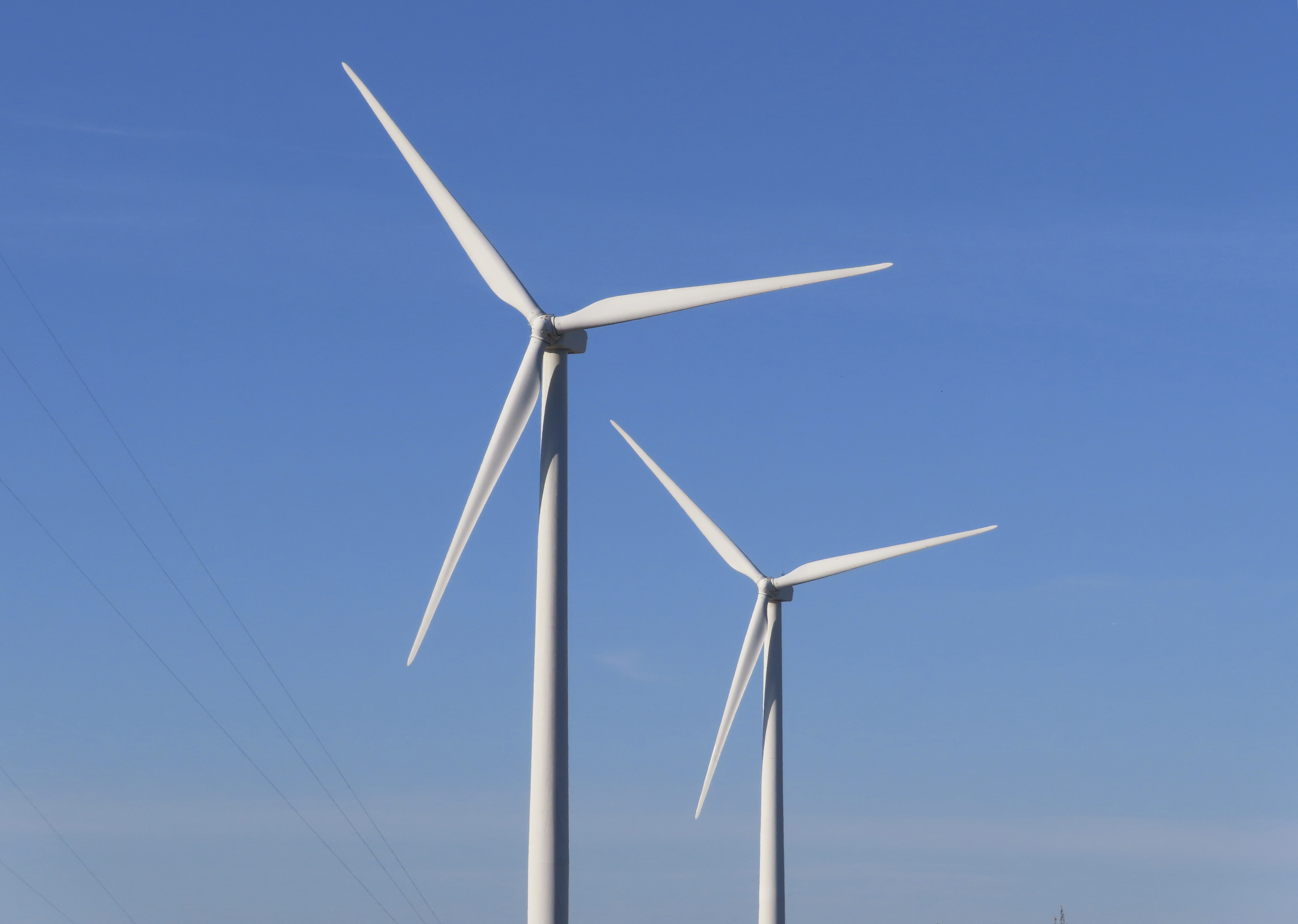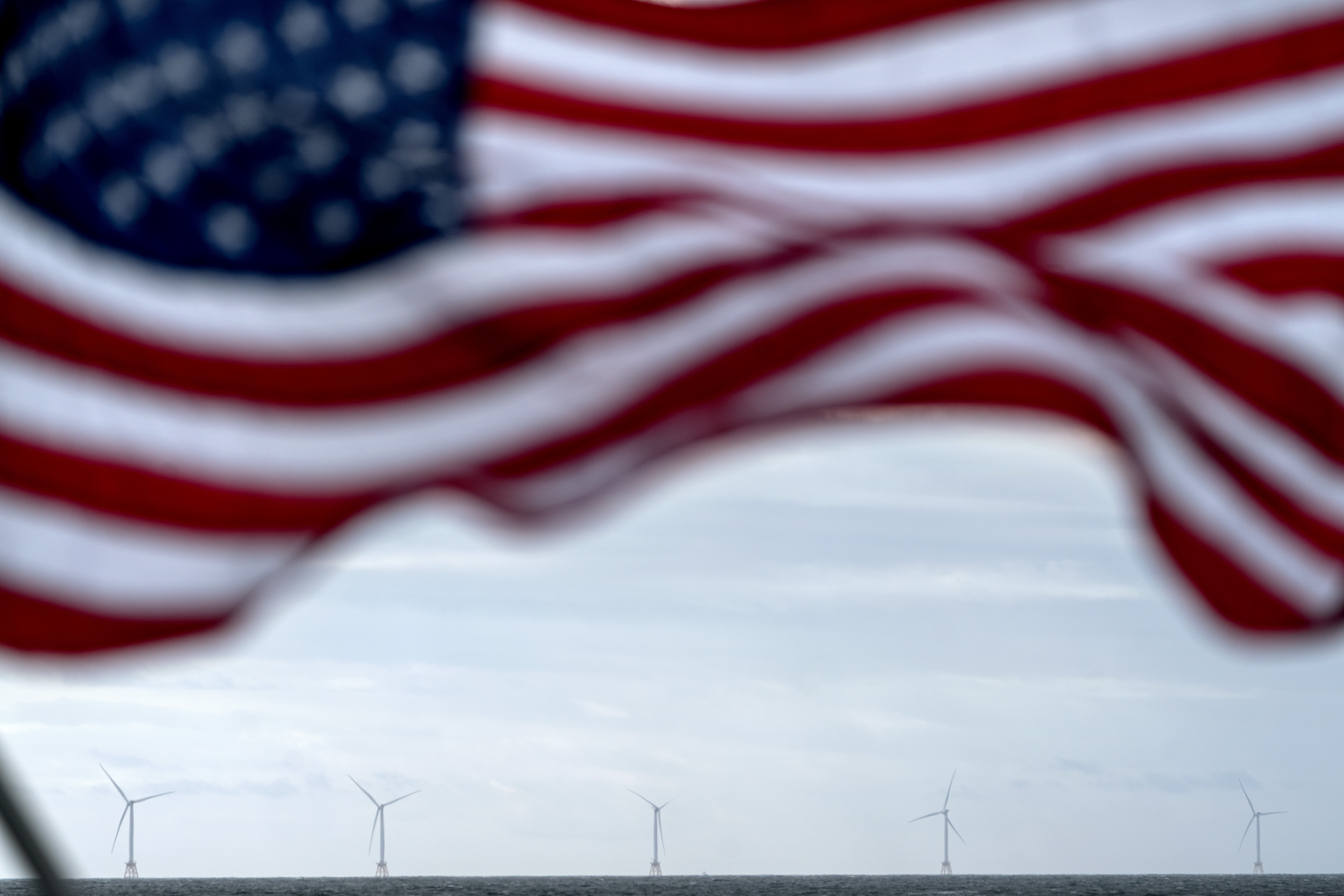Unfounded claims about offshore wind threatening whales have surfaced as a flashpoint in the fight over the future of renewable energy.
In recent months, conservatives including former President Donald Trump have claimed construction of offshore wind turbines is killing the giant animals.
Scientists say there is no credible evidence linking offshore wind farms to whale deaths. But that hasn't stopped conservative groups and ad hoc “not in my back yard”-style anti-development groups from making the connection.
The Associated Press sorts fact from fiction when it comes to whales and wind power as the rare North Atlantic right whale's migration season gets underway:
Get Philly local news, weather forecasts, sports and entertainment stories to your inbox. Sign up for NBC Philadelphia newsletters.
WHERE ARE U.S. OFFSHORE WIND PROJECTS?
To date, two commercial offshore wind farms are under construction in the United States. Danish wind energy developer Ørsted and the utility Eversource are building South Fork Wind, located 35 miles east of Montauk Point, New York. Ørsted announced Dec. 7 that the first of its 12 turbines there is now sending electricity onto the grid. Vineyard Wind is building a 62-turbine wind farm 15 miles off Massachusetts. Both plan to open by early next year, and other large offshore wind projects are obtaining permits.
There are also two pilot projects — five turbines off Rhode Island and two off Virginia. The Biden administration aims to power 10 million homes with offshore wind by 2030 — a key piece of its climate goals.
Lawsuits from community groups delayed Ørsted’s two large offshore wind projects in New Jersey and the company recently announced it’s cancelling those projects. That decision was based on their economic viability and had nothing to do with offshore wind opposition in New Jersey, said David Hardy, group executive vice president and CEO Americas at Ørsted.
ARE U.S. WIND FARMS CAUSING WHALE DEATHS?
Experts say there’s no evidence that limited wind farm construction on the Atlantic Coast has directly resulted in any whale deaths, despite politically motivated statements suggesting a link.
Rumors began to swirl after 2016, when an unusual number of whales started to be found dead or stranded on New England beaches -- a trend that predates major offshore wind farm construction that began this year.
“With whale strandings along the Northeast earlier this year in places like New Jersey, the reality is that it’s not from offshore wind,” said Aaron Rice, a marine biologist at Cornell University.
In answering questions about whale strandings earlier this year, the National Oceanic and Atmospheric Administration reported that around 40% of recovered whale carcasses showed evidence of death from fishing gear entanglement or vessel strikes. The others could not be linked to a specific cause.
In Europe, where offshore wind has been developed for more than three decades, national agencies also have not found causal links between wind farms and whale deaths.
Meanwhile, U.S. scientists are collecting data near offshore wind farms to monitor any possible impacts short of fatality, such as altered behavior or changes to migration routes. This research is still in preliminary stages, said Doug Nowacek, a marine biologist at Duke University who helped put trackers on whales this summer off Massachusetts as part of a 5-year federally-funded study.
WHAT REAL DANGERS DO WHALES FACE?
While the exact causes of recent whale strandings along the East Coast mostly are not known, whales do face dangers from human activities.
The biggest threats are shipping collisions and entanglement in fishing gear, according to scientists and federal authorities. Underwater noise pollution is another concern, they say.
Some advocates for protecting whales have characterized the push against offshore wind power as a distraction from real issues. “It seems that this is being used in an opportunistic way by anti-wind interests,” said Gib Brogan, fisheries campaign director at the environmental group Oceana.
Since 2016, humpback whales have been dying at an advanced rate — one the federal government terms an “unusual mortality event.” The much rarer North Atlantic right whale with fewer than 360 on Earth is also experiencing an unusual mortality event.
NOAA reports 83 whales have died off the East Coast since Dec. 1, 2022. Roughly half were humpbacks between Massachusetts and North Carolina, and two were critically-endangered right whales in North Carolina and Virginia.
WHAT'S BEING DONE TO PROTECT WHALES NEAR WIND FARMS?
Federal law sets limits on human-generated sound underwater for continuous noise and short sudden bursts.
Marine construction projects can reduce possible impact on marine mammals, including by pausing construction during migration seasons, using “bubble curtains” to contain sound from pile-driving and stationing trained observers with binoculars on ships to look for marine mammals.
Offshore wind developers are taking steps required by regulators, but also are voluntarily adopting measures to ensure marine mammals are not harmed. Ørsted won't drive piles between Dec. 1 and April 30, when whales are on the move. It uses additional lookout vehicles, encircles monopiles for turbines with bubble curtains and does underwater acoustic monitoring.
Equinor plans to use acoustic monitoring and infrared cameras to detect whales when it starts developing two lease areas off Long Island with its partner bp. The company says it will limit pile driving to months when right whales are least likely to be present.
WHY ARE SOME PEOPLE ALLEGING WIND FARMS CAUSE WHALE DEATHS?
One vocal opponent of offshore wind is the Heritage Foundation, a conservative think tank based in Washington, D.C. Diana Furchtgott-Roth, director of the foundation's center for energy, climate and environment, wrote in November that Ørsted's scrapped New Jersey wind project was “unsightly” and a threat to wildlife.
“Whales and birds ... stand to gain if offshore wind abandons the Garden State,” Furchtgott-Roth wrote.
Ørsted's Hardy said claims about wind farms killing whales are “not scientific" but “very much politically-driven misinformation."
The Heartland Institute, another conservative public policy group, has also pushed back at offshore wind projects. H. Sterling Burnett, director of the Arthur B. Robinson Center on Climate and Environmental Policy at the institute, said the wind projects are subject to unfairly lax regulatory restrictions compared to fossil fuel projects.
“We think it should be held to the same standard that any oil and gas project would be,” Burnett said.
Sign up for our Breaking newsletter to get the most urgent news stories in your inbox.
Smaller anti-wind groups have also organized in coastal communities to oppose projects they feel jeopardize water views, coastal industries and recreation.
WHAT'S THE IMPACT OF MISINFORMATION?
Offshore wind opponents are using unsupported claims about harm to whales to try to stop projects, with some of the loudest opposition centered in New Jersey.
Misinformation can cause angst in coastal communities where developers need to build shoreside infrastructure to operate a wind farm.
Republican politicians have taken opposition from shore towns and community groups seriously. GOP congressmen from New Jersey, Maryland and Arizona got the U.S. Government Accountability Office to open an investigation into the offshore wind industry's impacts on commercial fishing and marine life and want a moratorium on projects.
New Jersey’s Democrat-controlled Legislature remains steadfastly behind the industry.
ARE WHALES IMPACTED BY CLIMATE CHANGE?
One reason whale advocates push for renewable energy is that they say climate change is harming the animals — and less reliance on fossil fuels would help solve that problem.
Scientists say global warming has caused the right whale's preferred food — tiny crustaceans — to move as waters have warmed.
That means the whales have strayed from protected areas of ocean in search of food, leaving them vulnerable to ship strikes and entanglements. Large whales play a vitally important role in the ecosystem by storing carbon, so some scientists say they are also part of the solution to climate change.
Associated Press climate and environmental coverage receives support from several private foundations. See more about AP’s climate initiative here. The AP is solely responsible for all content.



